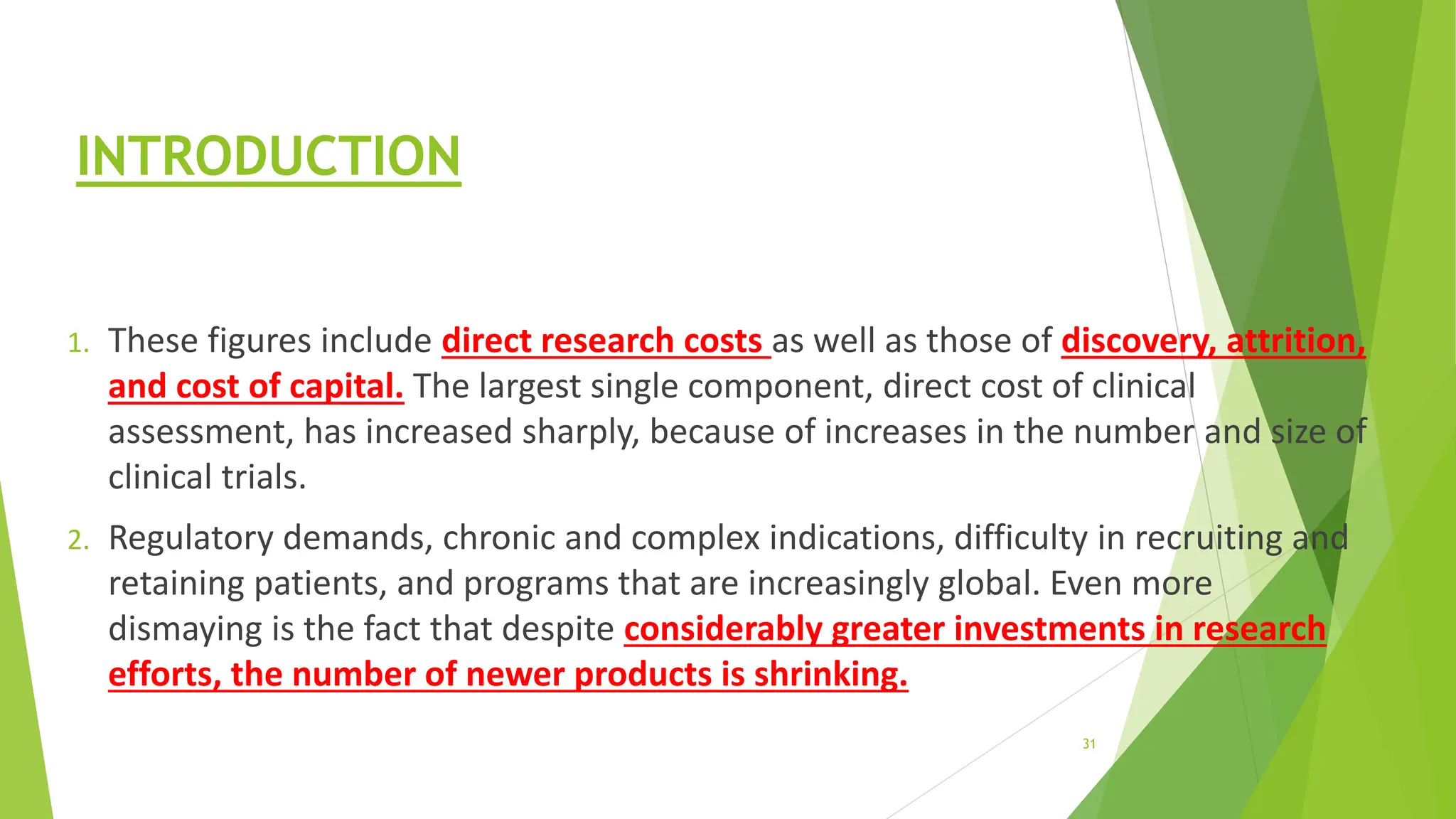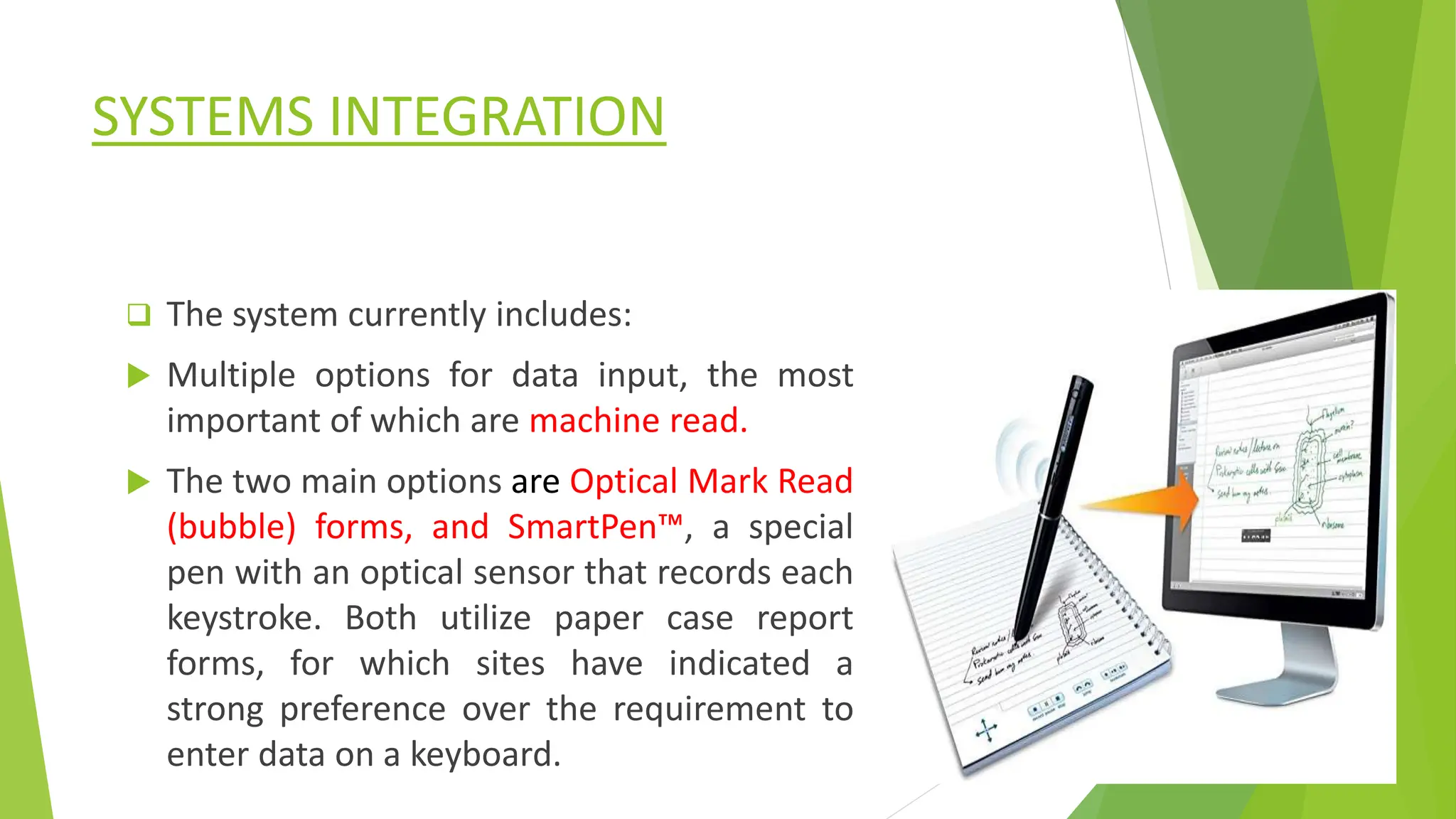This document discusses some of the key ethical issues related to using computers in pharmaceutical research, including privacy, liability, ownership, and power. Regarding privacy, it notes that computers have increased both the scale and qualitative nature of privacy intrusions. The three elements of relevance, consent, and method are discussed in relation to privacy intrusions. Issues of liability around software as a product versus service and ensuring accuracy of data are also covered. Questions around how to define and protect ownership of computer software as a unique type of property are raised.



![Privacy
Before the advent and prevalence of computers, intrusions into an
individual’s privacy were largely time- and place dependent.
The intrusion could be done but only on a small scale. As Johnson
[15] notes, however, computers have changed the nature of
intrusion into privacy as well as the scale of intrusion into
privacy.
The result is a demand to rethink privacy and rethink the
framework of applied ethics, especially because the scale of
intrusion may change the qualitative nature of the offense.](https://image.slidesharecdn.com/computersinpharmaceuticalformulations-final-240315094656-89b37c8a/75/Computers-in-Pharmaceutical-Formulations-Final-pptx-4-2048.jpg)






![Privacy
Method
In fact, as Ware [1] points out, the threats to the right to privacy were viewed in
the 1970s as originating primarily from the government.
The phrase “Big Brother is watching” meant that government officials had
control over information on citizens.
Now, however, a huge information industry has evolved and the biggest threats
derive from private parties.
Pharmaceutical researchers need not and ought not contribute to the supply of
information available about an individual.
Furthermore, given the advent and techniques of data mining, researchers
should take precautions and build prohibitors into research that would prevent
identification of any individual subject of the research.](https://image.slidesharecdn.com/computersinpharmaceuticalformulations-final-240315094656-89b37c8a/75/Computers-in-Pharmaceutical-Formulations-Final-pptx-11-2048.jpg)









![Power
Johnson [17] identified the issue of power as a crucial matter for the
development of computer ethics.
Mason [23] made the same point when he identified accessibility as a concern
for people investigating computer ethics.
The issue of power may be important as never before, if Moor [10] is correct.
He has suggested that the computer revolution has now gone through two
distinct stages, namely, the introduction stage and the permeation stage.
He believes the computer revolution is now entering a third stage, the power
stage.
This stage will necessarily deal with the impact of computers on human life
especially in the areas of politics, socialization, and law.](https://image.slidesharecdn.com/computersinpharmaceuticalformulations-final-240315094656-89b37c8a/75/Computers-in-Pharmaceutical-Formulations-Final-pptx-21-2048.jpg)
![Power
While Moor asks for investigation, others have already made judgments.
For instance, Joy [25] argues that limits must be placed on technology and its
development.
Others, for example, Weckert [26] do not share his rather pessimistic and
alarmist view about how technology, especially the technology of computers,
will affect human life.
That there is debate surrounding computers as they affect society and its
members is evidence that attention needs to be paid to this area.](https://image.slidesharecdn.com/computersinpharmaceuticalformulations-final-240315094656-89b37c8a/75/Computers-in-Pharmaceutical-Formulations-Final-pptx-22-2048.jpg)
![Power
After stating that “power” may broadly be construed as any capacity, Johnson
[17] analyzes computer use in terms of several topics, including the matter of
centralization or decentralization of power, computer use as favoring the status
quo, the embedded values in computer use and programming, the impact on
those who have and those who do not have access to computers, the effect
computers may have on alienating people from what is rightfully theirs, and the
place of the computer professional in resolving these matters.
Of special concern to the computer user doing pharmaceutical research are the
matters of computer use as favoring the status quo and the way computers
might exclude groups or have embedded biases.](https://image.slidesharecdn.com/computersinpharmaceuticalformulations-final-240315094656-89b37c8a/75/Computers-in-Pharmaceutical-Formulations-Final-pptx-23-2048.jpg)
![Codes of conduct relevant to the use of
computers
A professional code of conduct serves several purposes: to allow a profession
to regulate itself; to state the agreed-upon values of a profession; to make
members aware of issues to which they might not otherwise be sensitized; and
to provide guidelines for ethical behavior [17].
Pharmaceutical researchers have certain responsibilities and obligations in the
pursuit of their profession.
By applying computers to pharmaceutical research, researchers introduce new
ethical issues in the execution of their research.
The Association for Computing Machinery (ACM), the United States’ largest
organization of computer professionals, was aware of such potential when it
adopted its first Code of Professional Conduct in 1972.](https://image.slidesharecdn.com/computersinpharmaceuticalformulations-final-240315094656-89b37c8a/75/Computers-in-Pharmaceutical-Formulations-Final-pptx-24-2048.jpg)

































